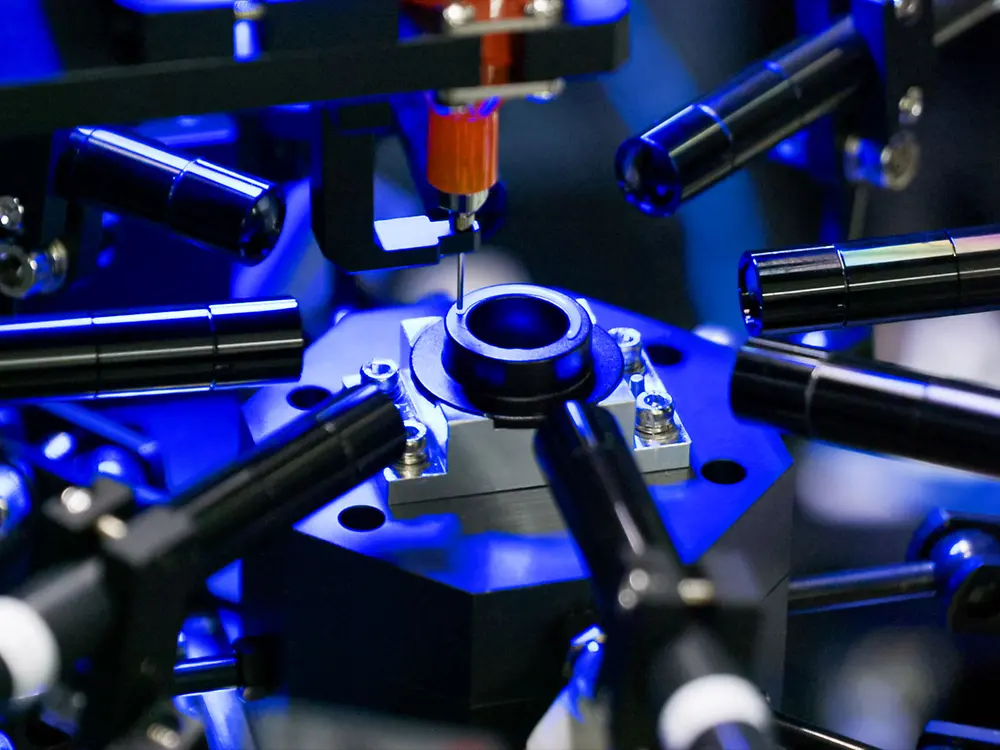With the launch of Loctite 3296 – a new dual cure adhesive – Henkel is expanding its range of dedicated active alignment adhesives for ADAS sensors, which are essential for precision and high sensor reliability. The new product provides a very high cure depth after only a few seconds of exposure to UV light and is designed to bond particularly well to aluminum and FR4.
When precision is key, the active-alignment assembly process is vital to deliver components of the required quality: The active alignment workflow allows for the optical components to be positioned and then finely adjusted to ensure optimal focus before being cured in place. Compared to a threaded lens barrel that can only be adjusted in the z-direction, active-alignment allows for six-degrees of freedom in the alignment process, with an accuracy of 100 nanometers.
“The ADAS camera and LiDAR modules perform safety-critical functions by assisting the driver to stay in control of the driving environment, thereby ensuring safety of all road users. ADAS sensors must provide high resolution images and perform with superior reliability in harsh environments for the lifespan of the vehicle,” said Rodrigo Aguilar, ADAS Business Development Manager at Henkel. “Thanks to their exceptional performance and stability as well as tailored chemistry for long-term durability, the new Loctite 3296 and recently-launched Loctite ABLESTIK NCA 3218 adhesives excel in these highly demanding contexts”, complements Andreas Niegemeier, Product Development Manager at Henkel.
Loctite 3296 and Loctite Ablestik NCA 3218, which was launched earlier this year, are both dual cure adhesives (UV & thermal) that meet a variety of assembly requirements through their respective adhesive performance characteristics. For example, Loctite 3296 provides a very high cure depth after only a few seconds of exposure to UV light and is designed to bond particularly well to aluminium and FR4. Loctite Ablestik NCA 3218, which has a grey colour for more efficient light blocking, is designed for assembly processes that require low post-cure temperatures, making it especially favourable for assembling components made of plastic. Both products deliver proven high dimensional stability after cure.
Together, the new Loctite 3296 and Loctite Ablestik NCA 3218 represent the next generation of camera module adhesives. By leveraging the advantages of purely cationic epoxy adhesives, both products provide a high glass transition temperature (Tg) in combination with low and consistent shrinkage as well as high cure depths and thus are superior compared to conventional adhesives employing free-radical curing mechanisms like acrylates.
Both, Loctite 3296 and Loctite Ablestik NCA 3218 have been designed with greater emphasis on environmental responsibility and are fully EU REACH compliant. The adhesives are free of antimony, which is still used in many other adhesives as photo initiator and has recently been classified as dangerous due to its potential health hazards. Moreover, both adhesives are free of CMT or SVHC substances and do not contain any toxic ingredients.
To get more detailed & technical information of active alignment adhesive application, please visit our whitepaper of active alignment adhesive site, Automotive ADAS Camera White Papers - Henkel Adhesives (henkel-adhesives.com).








